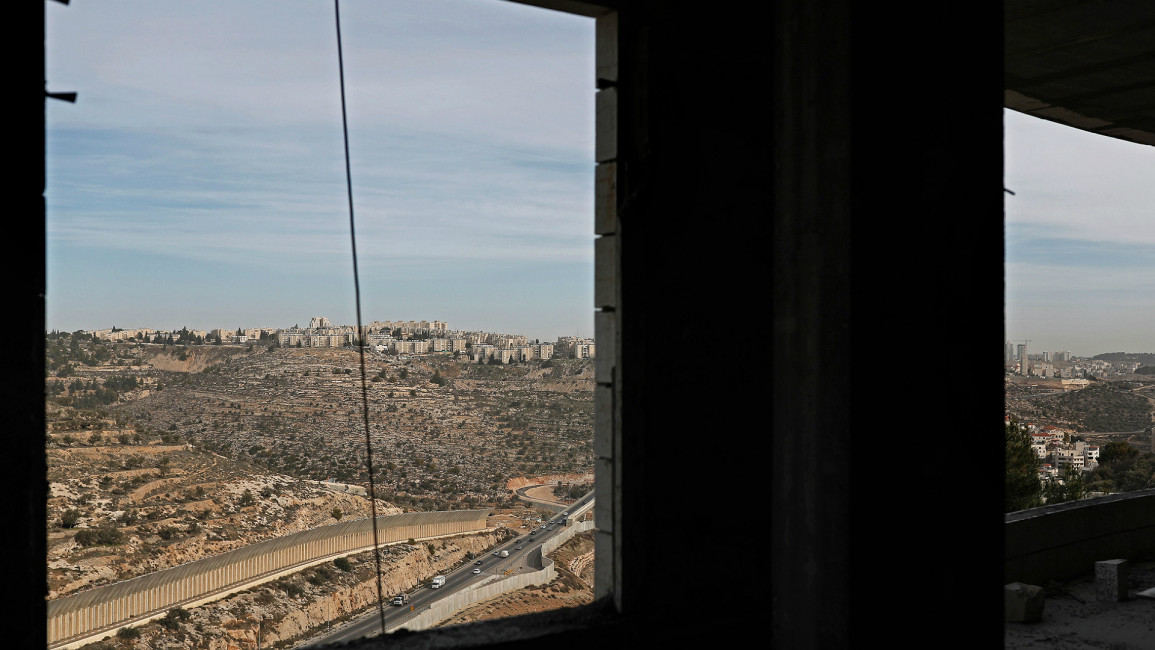Israel approves 400 settlement units north of Bethlehem
The Jerusalem municipality approved on Tuesday the building of 400 settlement units in the Israeli settlement of Gilo, north of Bethlehm, in the West Bank.
The project will include, according to Israeli media reports, a 30-floor tower, 800 square metres (sq m) of commercial space, 6,000 sq m for public buildings and 80 individual apartments. It will be implemented on a 11,000 sq m surface.
The Gilo settlement was established in 1973 on a hill overlooking the Palestinian town of Beit Jala, part of the Bethlehem conglomeration, which lost much of its lands to the settlement.
Wall in the Cremisan Valley, between the Palestinian town of Beit Jala and Jewish settlement of Gilo #WALLOFSHAME pic.twitter.com/EHdNQ4s5Rm
— ciaran_Palestine (@kieran_shanahan) August 18, 2015
“Beit Jala’s lands were over 14,500 dunams (14.5 square kilometres) before Gilo began to expand. Today, the town is left with 4,500 dunams (4.5 sq km) only,” Samia Khaliliyeh, an engineer at the planning unit of Beit Jala municipality, told The New Arab.
“Gilo took the quarries of Beit Jala, from which families used to extract the rose stone which characterized the town. The settlement destroyed this industry completely,” noted Khaliliyeh.
“Because of the expansion of Gilo, Beit Jala lost all the space available for urban expansion. The city today is a big mass of built-up area that is getting more crowded,” she explained.
“The Israeli plans that we are aware of are to connect Gilo with another settlement, Har-Gilo, which will completely kill any growth possibilities for Beit Jala,” said Khaliliyeh.
Video: In The Framework of Great #Jerusalem Plan, #Settlement Associations Take Over A Land In The Town Of Beit Jalahttps://t.co/MpELJCoOoT pic.twitter.com/S6X90GhhGO
— wewiv (@wewiv2014) September 4, 2019
The Israeli municipality of Jerusalem considers Gilo to be under its jurisdiction. According to Khalil Tafakji, Palestinian researcher and head of the maps unit at Jerusalem’s Orient House, “in 1967 Israel expanded Jerusalem’s boundaries over the lands of 28 Palestinian towns and villages, including Beit Jala.”
Tafakji told The New Arab that “Israel’s aim is to annex as much as possible of Palestinian empty land to its Jerusalem boundaries”.
Tafakji also pointed out that “the current extension of Israel’s Jerusalem takes up to 1.5% of the surface of the West Bank. But the ‘Greater Jerusalem’ plan will take up to 10% of the West Bank’s surface, reaching to the slopes of the Jordan Valley”.
Earlier in January, Israel approved the building of 3,700 settlements between Bethlehem and Jerusalem, part of which are to be located above and across the Green Line, Israel’s 1948 boundaries, effectively erasing them.



